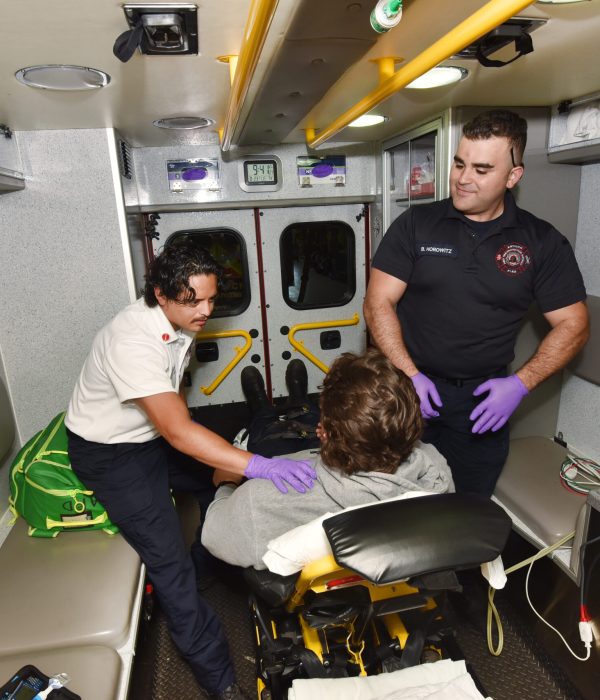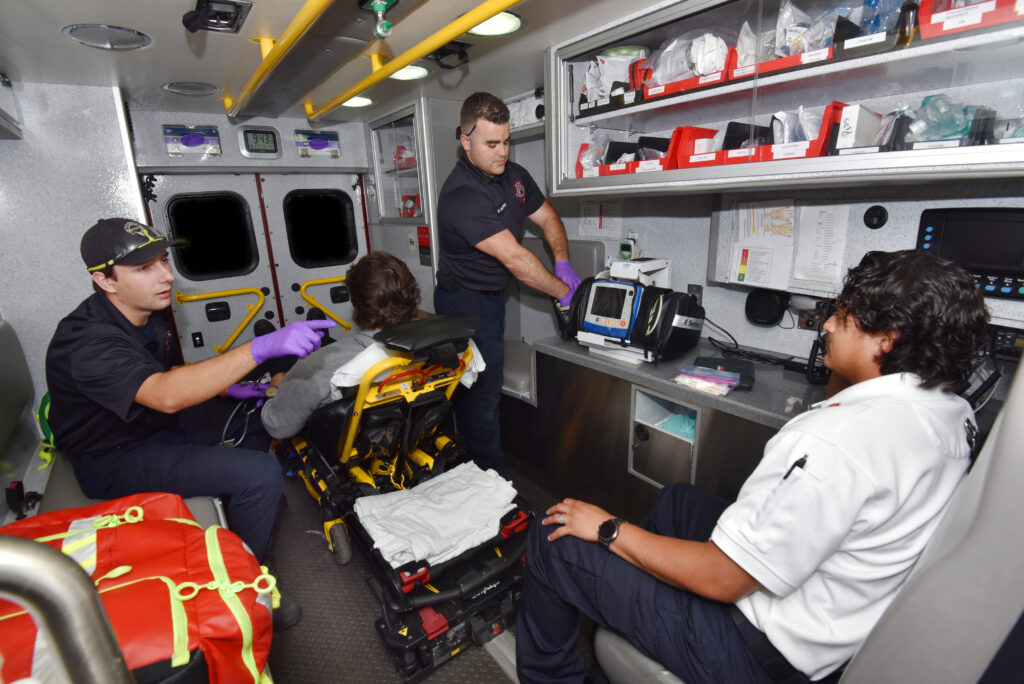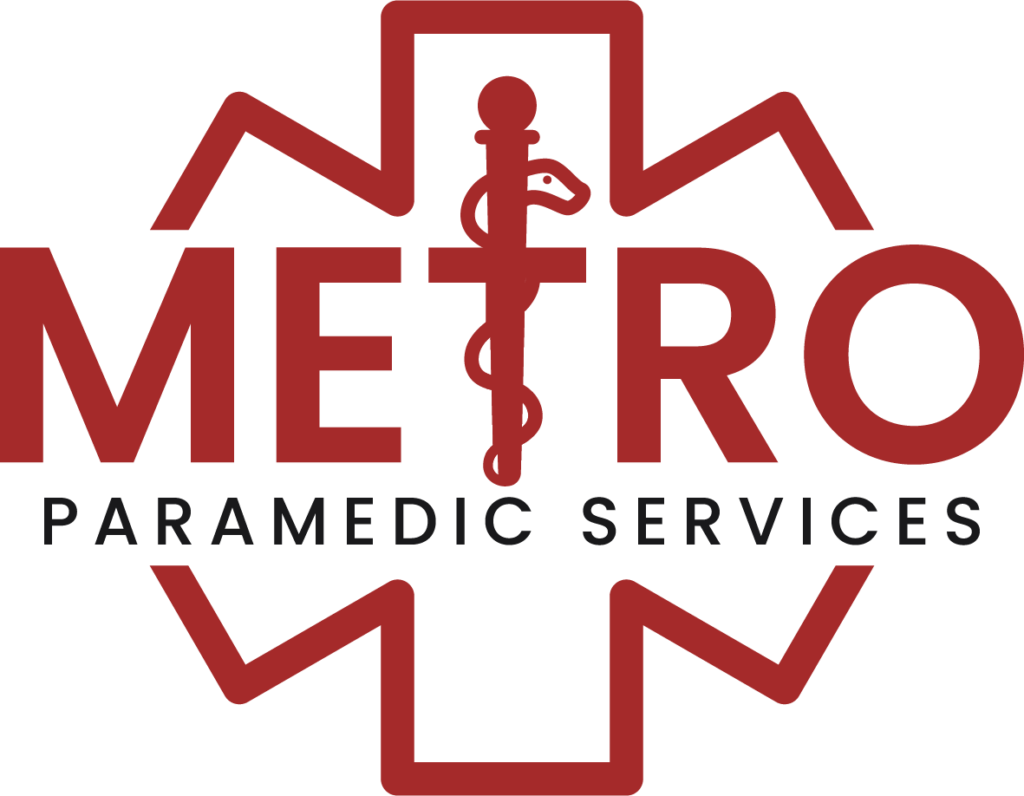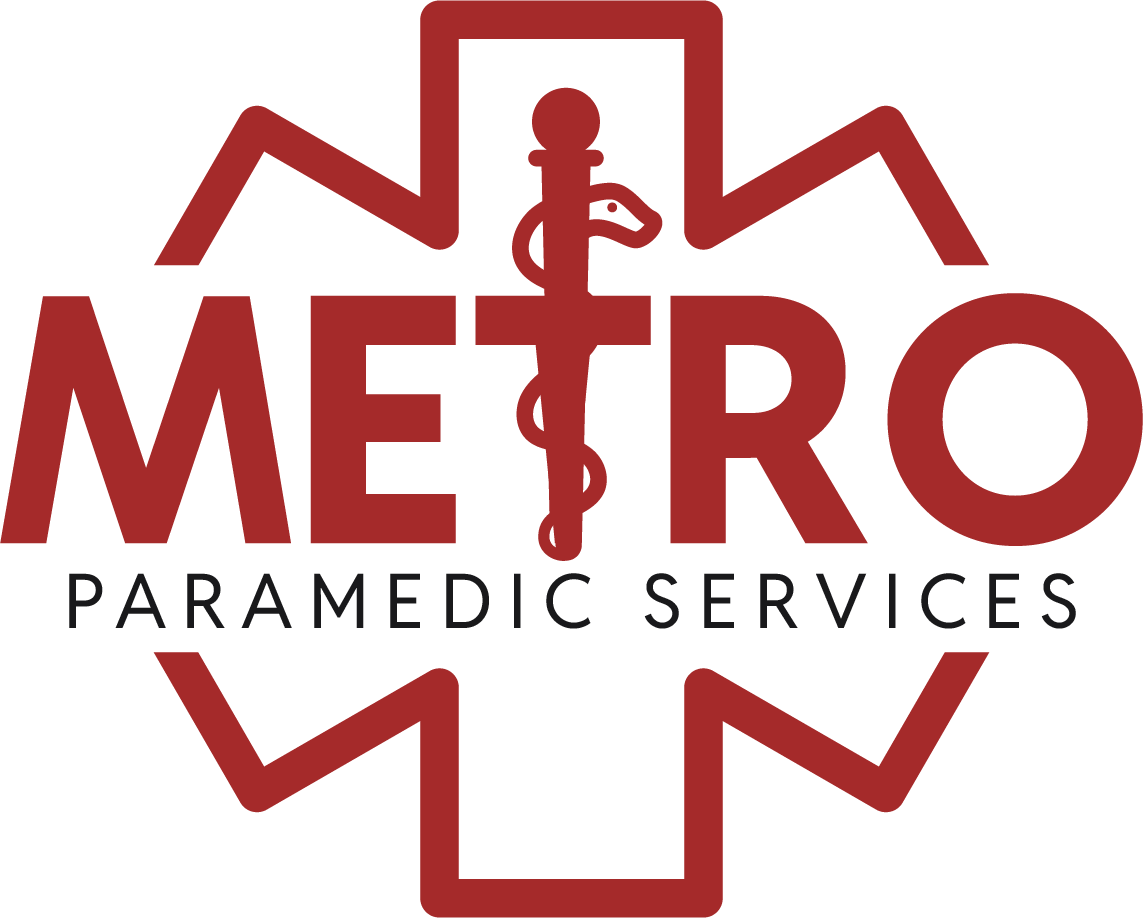Metro Paramedics has provided emergency medical and firefighting services to communities since 1984. Find out how Metro Paramedics can fit the needs of your municipality or fire district.
Emergency Call

When it comes to emergency medical services (EMS), the terms “Paramedic” and “EMT” are often used interchangeably, but they represent distinct roles with different levels of training, responsibilities, and skills. Understanding the difference between a Paramedic and an EMT is crucial for anyone considering a career in emergency services or seeking to understand the scope of care provided in emergency situations. At Metro Paramedic Services, we recognize the importance of having a well-trained team to handle emergencies effectively. Below, we explore the key differences between Paramedics and EMTs, their roles, training, and the impact they have on emergency care.
The primary difference between Paramedics and EMTs lies in their level of training and education. EMTs (Emergency Medical Technicians) are the entry-level professionals in the EMS field. They undergo approximately 120-150 hours of training, focusing on basic life support skills such as CPR, patient assessment, and basic emergency care procedures. Paramedics, on the other hand, receive significantly more extensive training, ranging from 1,200 to 1,800 hours. This training includes advanced life support techniques, medication administration, and more complex medical procedures.
Key Points:
EMT training: 120-150 hours focused on basic life support.
Paramedic training: 1,200-1,800 hours, including advanced medical procedures.
Paramedics can administer medications and perform advanced airway management.


The scope of practice defines what EMTs and Paramedics are legally allowed to do in an emergency. EMTs are trained to provide basic emergency medical care, such as stabilizing patients, performing CPR, using AEDs (Automated External Defibrillators), and managing trauma incidents. Paramedics have a broader scope of practice that includes all the duties of an EMT, along with advanced procedures like intubation, intravenous therapy, and administering a wider range of medications. Paramedics are often the highest level of pre-hospital care available.
Key Points:
EMTs provide basic life support, including CPR and trauma care.
Paramedics perform advanced procedures such as intubation and IV therapy.
Paramedics can manage more complex medical emergencies.
EMTs and Paramedics both play critical roles in emergency situations, but their responsibilities differ. EMTs are typically the first responders on the scene and are responsible for assessing the patient’s condition, providing immediate care, and transporting patients to medical facilities. Paramedics, due to their advanced training, take on additional responsibilities such as leading emergency response teams, making complex medical decisions on-site, and performing life-saving procedures that can stabilize a patient before they reach the hospital.
Key Points:
EMTs are often the first on the scene, providing initial patient assessment and care.
Paramedics lead emergency teams and make critical medical decisions.
Paramedics perform life-saving procedures in the field.


Both EMTs and Paramedics have opportunities for career advancement, but the paths differ. EMTs can advance by gaining experience and additional certifications, eventually pursuing Paramedic training. Paramedics, with their advanced skills, can move into specialized areas such as critical care transport, flight medicine, or even management roles within EMS organizations. The additional training and responsibilities of a Paramedic also open doors to higher-paying positions and more specialized roles in the healthcare field.
Key Points:
EMTs can advance to Paramedics with additional training and certifications.
Paramedics have opportunities in specialized fields like flight medicine and critical care.
Paramedics often have higher earning potential and more career opportunities.
At Metro Paramedic Services, we understand that in an emergency, the distinction between an EMT and a Paramedic can be the difference between life and death. Our team is composed of highly trained professionals who are equipped to handle the full spectrum of medical emergencies, ensuring the highest level of care. We are committed to providing industrial settings with expert emergency response services that can save lives, protect property, and minimize downtime.
Choose Metro Paramedic Services for reliable, professional, and comprehensive emergency response capabilities. Our expertise in EMS services ensures that no matter the situation, you have the best possible care on your side.

Metro Paramedics has provided emergency medical and firefighting services to communities since 1984. Find out how Metro Paramedics can fit the needs of your municipality or fire district.
Call Now

